Endangered Species - Blog Posts

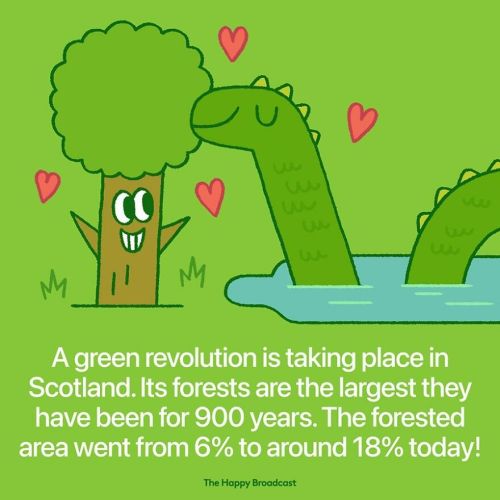

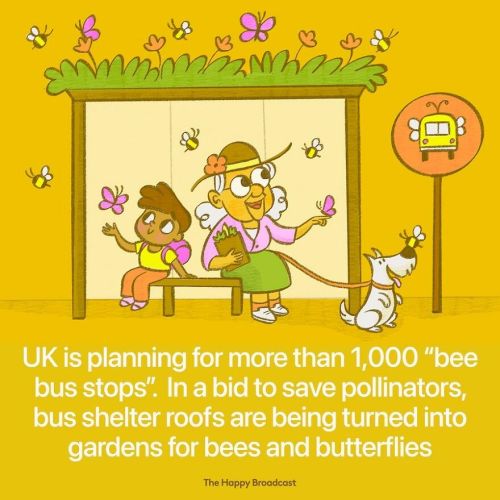
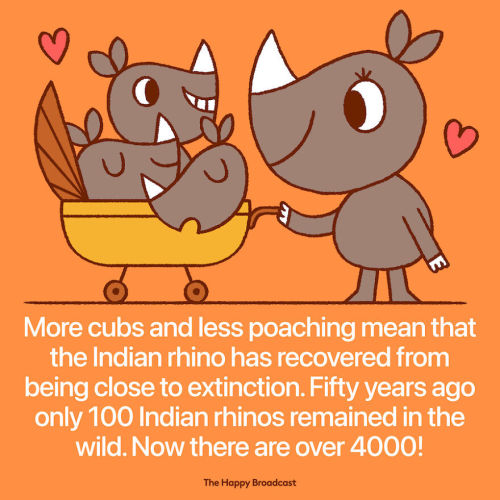

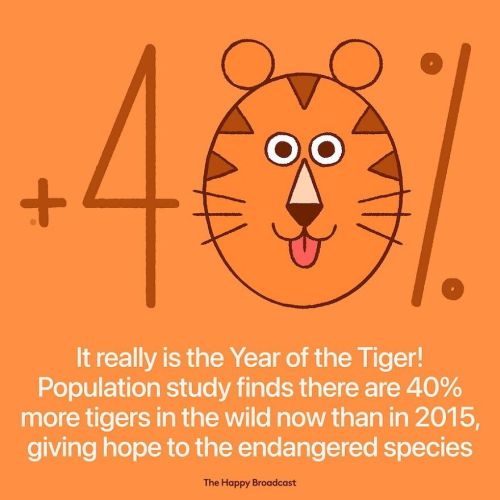

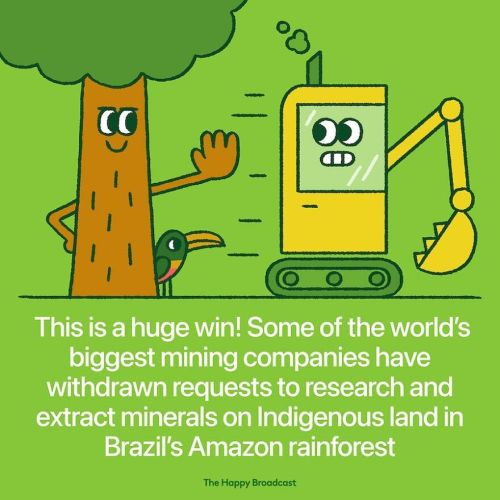










Tons more at the source!
Here's some good news for Christmas ❤️



















Tons more at the source!


J63 is the first southern resident calf born in 2025 and likely the first calf of J40 “Suttles”!
unfortunately, southern resident calves have around a 50% mortality rate within their first year of life. a lot of this seems to be from a lack of food availability due to overfishing and disturbances from boats.
right now, under the trump administration, FWS and NOAA are trying to change the definition of “harm” in the endangered species act in a way that would weaken environmental protections. this will severely impact the already endangered and struggling southern resident population. calves like J63 will have even lower chance of survival if this proposed rule goes through. public comments to oppose this decision are open until may 19th.
more information + suggested talking points for public comments here
submit a public comment here
source: center for whale research

A recent study looked at the demographics of an elephant population in Samburu, Kenya, and the impact of poaching. This graph shows the annual PIKE, or Proportion of Illegally Killed Elephants. PIKE is calculated as the number of illegally killed (poached) elephant carcasses divided by the total number of elephant carcasses discovered that year. The graph shows a recent dramatic increase in poaching.
The authors state:
Illegal human killing caused over half the recorded mortality in the Samburu elephants over the age of 9 (and indirectly caused the deaths of all victim’s dependent calves under 2 years). The high illegal killing in the latter part of the study had serious ramifications for the structure and organization of the population... the illegal killing appeared to select adult individuals in Samburu and particularly males resulting in increasing skew in the sex ratio over the course of the fourteen year study. Social disruption also resulted, with numerous well known and stable family groups being completely lost (i.e. no surviving breeding females) causing increased numbers of unaffiliated juveniles (orphans)
According to the New York Times, the recent spike in poaching, the greatest in decades, is driven by rising demand for ivory in Asia.

The most recent Living Planet Report (May 2012), compiled by the Zoological Society of London, examined more species (2,600) and more populations of those species (9,014) than ever before. Overall, these populations show a decline of about 30% since 1970. Tropical species (light green) show a decline of more than 60%, while in temperate regions (dark green) there has been an average recovery of about 30%. The worst affected species are those in tropical lakes and rivers, whose numbers have fallen by 70% since 1970.

The species groups that are proportionally most in danger (the proportion of species within that grouping that are imperiled) are overwhelmingly freshwater species. Freshwater mussels, crayfishes, stoneflies (stonefly larvae live in freshwater), freshwater fishes and amphibians are the most at risk. This demonstrates the substantial need for a focus on conservation of freshwater habitats.

"Hotspot watersheds" with 10 or more at-risk fish and mussel species are concentrated in the Southeastern United States. This reflects both the freshwater diversity of rivers and streams in this region, and the significant conservation threats.

Awesome Animal! The White Antelope or the Addax (Addax nasomaculatus) can be seen at many zoos, but in their wild home in the Sahara, they are extremely rare. These beautiful creatures are classified as Critically Endangered, and only a few hundred individuals remain in the wild. :(
Once the harsh winter is gone, when come the good and easier days, we often encounter bears swimming by the ice edge. Polar bears are extremely capable of having fun alone with whatever they find 🐻❄️ !.
Can you please make a pride flag from the Kakapo. It’s the world only flightless parrot that is critically endangered. It need more love and attention. 🥺
Of course! I’ve linked some articles about the Kakapo parrot below, if anyone wants to learn more.
Aromantic Flag Colorpicked from the Kakapo Parrot





Malayan Tapirs 5-6-23
Hell is a place where you have to draw a tapir’s head at ¾ view.
I didn’t end up drawing any baby tapirs, but it's important for you all to know they have markings like a watermelon.

DOGE just froze funding to vital Federal and Indigenous conservation programs devoted to supporting the very delicate and tenuous existence of the black-footed ferret.

I fell in love with these animals as a kid traveling to our National Parks. Their rarity and ferocity made me sharply aware, even as a child, of just how much of a responsibility we have toward our environment. I can't bear the thought of them being a fucking casualty of Trump and Musk.

Look at them! They do war dances.
Animals who are endangered: (w/ links)
Sea Lions - Approx. 300,000 individuals exist today.
Marine iguana - Approx. 200,000 and 300,000 individuals exist today.
Hippopotamus - Approx. 125,000 and 148,000 individuals exist today.
Jaguar - Approx. 64,000 individuals exist today.
Polar bears - Approx. 22,000 to 31,000 individuals exist today.
Asian elephant - Approx. 20,000 to 40,000 individuals exist today.
Leatherback turtle - Approx. less than 25,000 individuals exist today.
White Rhinos - Approx. 18,000 individuals exist today.
Hyenas - Approx. 5,000 to 14,000 individuals exist today.
Red pandas - Approx. 10,000 individuals exist today.
Snow leopard - Approx. 4,080 to 6,590 individuals exist today.
Cuban Crocodile - Approx. 3,000 to 6,000 individuals exist today.
Black rhinos - Approx. 5,600 individuals exist today.
Greater One-Horned Rhino - Approx. 3,700 individuals exist today.
Great white shark - Approx. 3,000 individuals exist today.
Tiger - Approx. 3,900 individuals exist today.
Giant panda - Approx. 2,464 individuals exist today.
Monarch butterflies - Approx. less than 2,000 individuals exist today.
Saola - Approx. less than 750 individuals exist today.
Beluga - Approx. 279 individuals exist today.
Cross River Gorillas - Approx. 200 to 300 individuals exist today.
Amur leopard - Approx. 60 to 80 individuals exist today.
Javen Rhinos - Approx. 67 individuals exist today.
Red wolf - Approx. 20 to 25 individuals exist today.
Vaquita - 10 individuals exist today.
────────────────────────────────────────────
And please remember that there are so many more animals species who are endangered and need your help! These are only a few, so please do what you can!
I will make a pt. 2 soon because there are so many more I could do to spread awareness. I'll also try to find websites and sources you can use! If you have any please share.
────────────────────────────────────────────

DOGE just froze funding to vital Federal and Indigenous conservation programs devoted to supporting the very delicate and tenuous existence of the black-footed ferret.

I fell in love with these animals as a kid traveling to our National Parks. Their rarity and ferocity made me sharply aware, even as a child, of just how much of a responsibility we have toward our environment. I can't bear the thought of them being a fucking casualty of Trump and Musk.

Look at them! They do war dances.

A tribute to the Tiger Each tiger subspecies tells a story—of strength, beauty, and survival. This illustration captures them all in fine detail, alongside their distribution, conservation status, and classification. Printed on museum-quality cotton rag paper with archival inks, it’s made to last—just like the tiger’s legacy. Available in multiple sizes and ready to travel anywhere. 🔗 Here

Sumatran Elephant Elephas maximus maximus Family: Elephantidae Genus: Elephas Conservation Status: Critically Endangered
Working on this one was a real challenge. The lighting of the photo was difficult to figure out, and the shapes on the head were at an angle that I wasn't familiar with. Anyway, the outcome got me satisfied. I had no idea about this subspecies until I got to study elephants. Very interesting subspecies. Join the club to know more about this and more animals. Also, you can get access to the book in the making and the Esticker album. Click here ____________________________________________ Thank you guys for your support. If you like the content please like and subscribe. Deeping into animals that we think we know every week

Sri Lankan Elephant Elephas maximus maximus Family: Elephantidae Genus: Elephas Conservation Status: Endangered ____________________________________________ Doing the largest mammal encyclopedia takes time. Consider supporting the project by joining the club here. Exclusive content, more illustrations, and more information about animals. Likes reblogs, and follows are also very much appreciated. Hasta la proxima!

Long-finned Pilot Whale Globicephala melas melas Family: Delphinidae Genus: Globicephala Conservation Status: Least Concern This whale is not a whale but a large dolphin. Despite the minimal differences between the Short-finned Pilot Whale and this species, they are indeed two distinct species. If that is not perplexing enough, this dolphin also possesses one subspecies—actually two, although one became extinct long ago along the coasts of Japan. In fact, scientists aren't sure that was a subspecies but almost sure. Let's say %93,2 sure. You see, science is consistently regarded as an exact discipline. Consider joining the club here. No money? No problem. Follows, likes and shares will help too. Hasta la vista.

The next pages of the book are ready! Now talking about the Black Rhinoceros and its subspecies. Considering joining the club to be part of this amazing project. All Mammals of the World illustrated, included its subspecies which makes it unique.
If you feel that this speaks to you check out the club options by clicking here. Giving a like and sharing this post is also very helpful. Thanks all for the attention and see you soon.

African Forest Elephant Loxodonta cyclotis Family: Elephantidae Genus: Loxodonta Subspecies: 00 Feed: Herbivorous Habitat: Monsoon Forest Status and Conservation: Endangered This unique elephant species is the smallest of the three (2.4 meters), it boasts a disproportionately impressive tusk. Adapted for forest life, it has a compact frame, less curved tusks for easy navigation, and probably the most captivating feature is its distinct yellow eyes common in many of these animals.
However, their valuable tusks make them targets for ivory poaching. This endangered species is challenging to study due to its remote habitat. Full body illustration and extended explanation join here: Discovering Club

I've been creating all these animal illustrations for my upcoming book centered around the fascinating world of mammals. I've launched an exclusive club that offers three different membership tiers, each with awesome rewards.
Click here to see more. Thank you, guys! Love you all and have a nice week. More animals to come soon. Northern White Rhinoceros Only two of these animals remain. The last male, named Sudan, passed away in 2018 due to age-related complications. With Sudan's death, this species is functionally extinct and now relies on various assisted reproductive techniques facilitated by humans.

African Bush Elephant Loxodonta africana Family: Equidae Genus: Equus Subspecies: 00
Feed: Herbivorous Habitat: Subtropical Dry Forest Status and Conservation: Endangered The largest elephant species, it stands as the tallest terrestrial animal on Earth, reaching heights of up to 3.96 meters. Highly social and exceptionally intelligent, elephants exhibit remarkable traits.
Given their impressive size and strong social bonds, elephants are effectively free from predators. Although young elephants may occasionally fall prey to lions or hyenas, their overall vulnerability is minimal.
Regrettably, the sole threat to their existence is us, humans. Throughout history, we have hunted elephants for sustenance and weaponry. In modern times, however, our pursuit of these magnificent creatures is driven primarily by a desire for ornamental purposes. _________________________________________ Thank you, guys, for being here. Check out my store here Likes, reblogs, followings, or all mean love to me. Thank you.

"Today, the last tiger subspecies and probably my favorite one: the Sumatran Tiger. While working on this animal, I discovered that it has several notable visual differences from other subspecies of tigers. One of the most striking is the length and density of its mane, which gives it an even more majestic appearance. Additionally, the tiger's stripes are thicker, creating a more vivid contrast in its coat.
I'm excited to share with you that I'll be releasing a poster featuring all the subspecies of tigers, including the Sumatran Tiger, very soon. Stay tuned for more updates!" Sumatran Tiger The Sumatran tiger is the smallest of all tiger subspecies and is currently listed as critically endangered with only about 400 individuals left in the wild. Unfortunately, the Javan and Bali tiger is now extinct. They were populations that belonged to this subspecies of tiger. To preserve the Sumatran tiger, numerous programs are being conducted in zoos that have shown promising results. _______________________________________________ Credits: Felids and Hyenas of the World: Wildcats, Panthers, Lynx, Pumas, Ocelots, Caracals, and Relatives. Dr. José R. Castelló Photo Reference Credit: Phil Le Cren ______________________________________________ Thank you for being here. If you like the content please like and follow. Reblogged is also very welcome. Check out the new website of the project here
...How in the fu-
how does that-
not a single bit of that viewpoint makes sense. like. the frick. how? how would one come to the conclusion that preserving habitat of species is unnecessary for preservation of that species?!?
I think this is it? H.R.1897 - ESA Amendments Act of 2025. https://www.congress.gov/bill/119th-congress/house-bill/1897/text
...Though there's another potentially-sketchy bill, one that says the ESA should only apply to species that are native to the United States. (And if a species has extant populations in / migrates to a different country, what then?)
H.R.102 - American Sovereignty and Species Protection Act of 2025 https://www.congress.gov/bill/119th-congress/house-bill/102/text.
...actually this one is rather short, so:
----------------------------
To amend the Endangered Species Act of 1973 to prevent a species that is not native to the United States from being listed as an endangered species or a threatened species, to prohibit certain types of financial assistance, and for other purposes.
IN THE HOUSE OF REPRESENTATIVES
January 3, 2025
Mr. Biggs of Arizona introduced the following bill; which was referred to the Committee on Natural Resources
A BILL
To amend the Endangered Species Act of 1973 to prevent a species that is not native to the United States from being listed as an endangered species or a threatened species, to prohibit certain types of financial assistance, and for other purposes.
Be it enacted by the Senate and House of Representatives of the United States of America in Congress assembled,
SECTION 1. Short title.
This Act may be cited as the “American Sovereignty and Species Protection Act of 2025”.
SEC. 2. Limitation on listing of nonnative species and provision of certain financial assistance.
(a) Limitation on listing of nonnative species.—Section 4(a) of the Endangered Species Act of 1973 (16 U.S.C. 1533(a)) is amended by adding at the end the following:
“(4) NONNATIVE SPECIES.—The Secretary may not determine that a species is an endangered species or a threatened species pursuant to this section if such species is not native to the United States.”.
(b) Limitation on provision of certain financial assistance.—Section 8(a) of the Endangered Species Act of 1973 (16 U.S.C. 1537(a)) is amended—
(1) by striking “As a demonstration of” and inserting the following:
“(1) IN GENERAL.—As a demonstration of”;
(2) by striking “(which includes, but is not limited to, the acquisition, by lease or otherwise, of lands, waters, or interests therein)”; and
(3) by adding at the end the following:
“(2) PROHIBITION ON PURCHASING LAND IN A FOREIGN COUNTRY.—No financial assistance provided under paragraph (1) may be used to acquire, by lease or otherwise, lands, waters, or other interests in a foreign country.”.
On April 16th 2025 the US federal government has proposed to change the interpretation of the endangered species act so that it no longer protects habitat.
This is open for public comment until the end of May 19th. Please comment and make your voice heard.
Wildlife need their habitat. If the ESA redefines harm so that habitat is no longer protected, the implications for wildlife would be catastrophic.
Why We Need to Care About Insects
Originally posted on my website at https://rebeccalexa.com/why-we-need-to-care-about-insects/
Some months back a study was released that demonstrates just how damaging climate change is to insects, particularly those in tropical areas. Warming temperatures cause insects to die from overheating and dehydration, kills off their food sources, and lowers their fertility rates to dangerous levels. Moreover, changes in climate affect insect phenology, the timing of when they hatch, migrate, breed, and so forth.
And because insects are so small, they’re often disproportionately affected by many of these problems. As ectotherms, they rely on the air around them to regulate their body temperatures; their small mass means they lose heat faster than larger animals, and can be overloaded with heat much more quickly. Tropical insects are especially at risk from major fluctuations in temperature because they are adapted to a relatively narrow temperature range.

Gray spruce looper moth (Caripeta divisata)
But the problem goes far beyond the tropics, and we are in the middle of an insect apocalypse. This problem often flies under the radar of those who are not already aware of invertebrate conservation. While a few insects, such as monarch butterflies (Danaus plexippus) and domestic honey bees (Apis mellifera), find themselves in the press on a regular basis, most species don’t have large fan clubs. Some of my favorite insects include the white-tipped ctenucha moth (Ctenucha rubroscapus), the velvet snail-eating beetle (Scaphinotus velutinus), and the black-tailed bumblebee (Bombus melanopygus), none of which are insects you’re likely to find making the headlines.
To be fair, there are a lot of insect species out there, so it would be hard to feature every single one individually. But we already face the problem that many people simply just don’t see why we need to worry about fewer bugs around. Last year I wrote an article about how search engines tend to produce exterminator sites at the top of results for various insects, and while some of that is no doubt due to advertising-oriented algorithms, they do reflect a widespread demand for extermination services that isn’t matched by more positive attention to these little animals.
Much has been said among entomologists, ecologists, and other professionals about why we need to be concerned about the drastic drop in the numbers of many insect species, and I’ve written about it as well. I could reiterate what would happen if we lost our pollinators (and also how to save them!) or the crucial role insect detritivores play in reducing diseases and keeping the food web cycling along. And I am still a champion for mosquitoes and other unpopular insects.

Green stink bug (Chinavia hilaris)
But these things always bear repeating. It may be that nine out of every ten organisms on this planet is an insect. Insects play an incredible number of ecological roles, from ecosystem engineers to pollinators to food sources and much more. Without them, ecosystems around the planet would collapse entirely.
I could certainly take the self-interested route and emphasize that fully one-third of our food relies on insects and other pollinators. I might also point out that insect detritivores help nourish the soil needed for everything from food crops to timber. While terrestrial insects and other arthropods only make up about a fifth of the amount of global biomass as their marine counterparts, they still represent a natural sink that holds about 200 million tons of carbon at any given time.
But our anthropocentric worldview rarely considers the intrinsic value of insects simply for existing. We’re constantly weighing and measuring their worth based on our biases and values. We divide them into “good” or “bad” insects: good insects are those that do things we like, like pollination or looking pretty, while bad insects are the ones that chew on our homes and plants or which bite or sting us when threatened or seeking food. For a lot of people, any insect beyond maybe a butterfly is a reason to say “Ewww, gross!” I’ve even seen this widespread among self-professed nature lovers, whether they have a true entemophobia or not, though there may be an evolutionary reason for this seemingly disproportionate reaction.
So consider this yet another attempt to change opinions about insects. I can’t cure entemophobia, but I can at least get people thinking more critically about personal and societal attitudes toward insects. I hope to get people to realize that widespread use of pesticides and other garden/agricultural chemicals–which has increased fifty-fold in twenty-five years–is driving the loss of so many insects. I’ve mentioned before that habitat loss is the single biggest cause of species endangerment and extinction, and that goes for insects, too. And, of course, the study mentioned at the start of this article is just one highlighting the increasing impact climate change has on insects worldwide.

Metric Paper Wasp (Polistes metricus)
Let me wrap this up on a bright note: word is getting out. There is a lot more awareness than there was twenty years ago, and there’s more nuance than we had in the early “save the (domesticated European honey) bees” campaigns. More people are ditching pesticides and other garden chemicals unless absolutely needed, and regenerative agricultural practices that use fewer chemicals overall are gaining ground. And while numerous organizations are increasing awareness of insect conservation, the Xerces Society for Invertebrate Conservation–the oldest organization dedicated solely to invertebrates–is still going strong.
And you can help spread the word, too. Share this article with others, and some of the resources and organizations linked throughout. Consider your own relationship to the native insects in the world around you, and whether you might make their lives a little easier. And remember that sometimes it is the smallest of things that have the greatest importance in such a massive system as an entire living planet.
